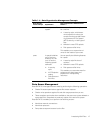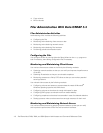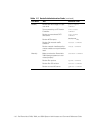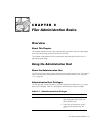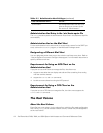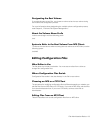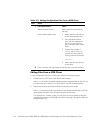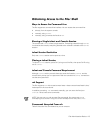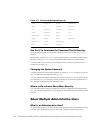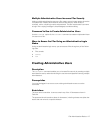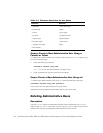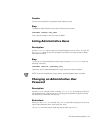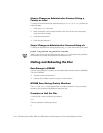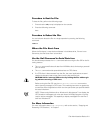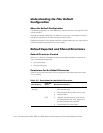
Filer Administration Basics 2-5
2EWDLQLQJ$FFHVVWRWKH)LOHU6KHOO
:D\VWR$FFHVVWKH&RPPDQG/LQH
The filer supports a command-line interface. You can access the command line:
directly, from the system console
remotely, using
telnet
remotely, using a remote shell such as
rsh
6KDULQJD6LQJOHWHOQHWDQG&RQVROH6HVVLRQ
The console and
telnet
share a single session. Everything entered through
telnet
is echoed at the console; everything entered at the console is echoed to the
telnet
session.
WHOQHW6HVVLRQ5HVWULFWLRQ
Only one
telnet
session can be open at a time.
&ORVLQJDWHOQHW6HVVLRQ
To close a
telnet
session, press Ctrl-] to log out of the filer, then press Ctrl-D to log
out of
telnet
.
WHOQHWDQG&RQVROH3DVVZRUG5HTXLUHPHQW
Although
telnet
and the console share the same shell session,
telnet
and the
console each prompt you for a password. Both the console and
telnet
connections
use the same password.
UVK6XSSRUW
The filer supports
rsh
with trusted remote hoststhose remote hosts listed in
/etc/
hosts.equiv
on the root volume.
In addition to entering
rsh
commands manually, you can use a shell script or
crontab
file to enter some commands.
NOTE: You can use
rsh
only to enter filer commands. You cannot use
rsh
to
remotely log in to the filer. To log in to a filer remotely from a host, use
telnet
.
&RPPDQGV$FFHSWHG)URPUVK
Table 2-3 lists the filer commands that you can execute



